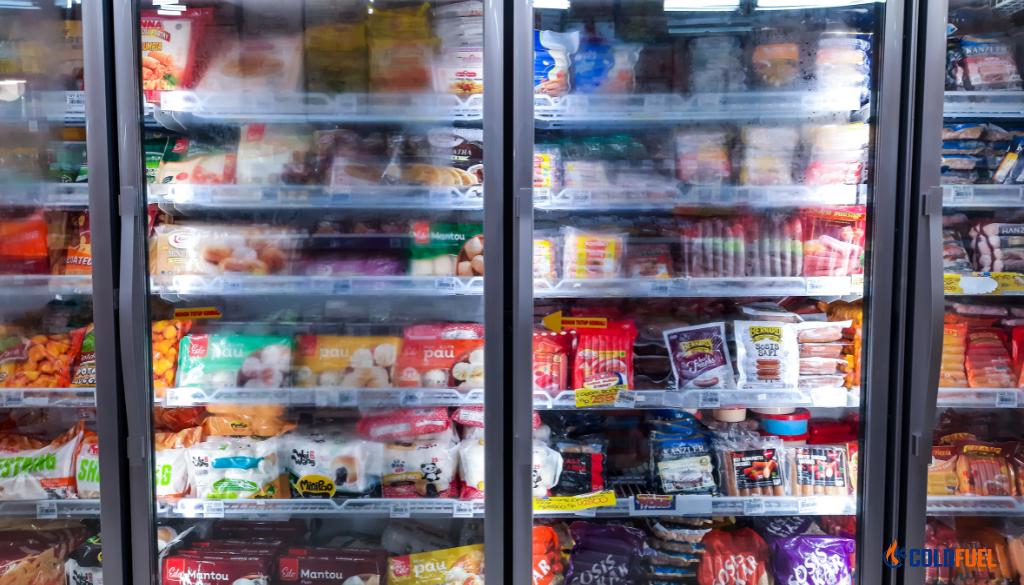If you have visited a restaurant, grocery store, or any business that relies on cold storage, you know how important commercial fridges are. It’s the heartbeat of the kitchen or storefront, keeping food safe and inventory fresh. But when your fridge stops working properly, one of the most common reasons is a refrigerant leak – and it’s a problem you shouldn’t ignore.
At Cold Fuel, we’ve handled numerous refrigerant leak cases, and we’re here to guide you through what to look for and how refrigerant leak repair actually works. Whether you’re trying to catch an issue early or need full commercial fridge repair, we’ve got you covered.
Why Refrigerant Leaks Are a Big Deal
Refrigerant is what keeps your fridge cold. It moves through the system, absorbing heat from inside the fridge and releasing it outside. When there’s a leak, the system can’t do its job. Things start warming up, and before you know it, food is at risk, energy bills go up, and the compressor is working way harder than it should.
Even worse? Many refrigerants are harmful to the environment, so these leaks aren’t just bad for your business – they can also violate environmental regulations.
Bottom line: if your fridge is leaking refrigerant, it’s not something you can afford to put off.
How to Tell If Your Commercial Fridge Has a Refrigerant Leak
You don’t need to be a licensed professional to notice when something’s off. Here are a few signs that could mean your fridge is leaking refrigerant:
1. It’s Not Staying Cold
This one is quite obvious, but if your fridge isn’t keeping the temperature it should, then there’s a good chance refrigerant is escaping. For example, it’s easy to quickly notice when the temperature of a freezer drops because of how cold it normally is.
2. Ice or Frost Where It Shouldn’t Be
If ice or frost begins to build up on the evaporator coils or inside the fridge, it could be due to a pressure imbalance caused by a leak. If the frost seems uneven or excessive, then there’s a higher chance this is true.
3. Weird Noises from the Compressor
If you’re hearing humming or clicking noises, then the compressor is struggling and is being overworked due to the low refrigerant levels. If it’s running longer than usual, it’s worth getting checked.
4. Visible Oil or Moisture
Sometimes you’ll spot a greasy or damp spot on or near the copper lines or fittings. Refrigerant leaks often bring some oil out with them, and that’s a telltale sign something’s wrong.
5. Your Power Bill Just Spiked
Leaking systems use a lot more energy to try and keep things cool. If your energy bills are suddenly higher with no clear reason, your fridge might be overworking due to a leak.

How We Properly Fix Refrigerant Leaks
At Cold Fuel, we don’t just slap a patch on and call it a day. We follow a proper step-by-step process to make sure your fridge is fully repaired and running like new again.
Step 1: Safely Recover What’s Left
While adhering to environmental guidelines, the first step is to remove the remaining refrigerant. It isn’t just about doing things properly; it’s also about doing them legally.
Step 2: Locate the Leak
To find the source of the leak, UV dyes, electronic sniffers, and soap bubble testing are commonly used tools. Whether it’s a cracked coil, faulty valve, or a worn-out connection, we’ll find it.
Step 3: Make the Repair
Depending on what’s leaking, we either repair the part or replace it. For minor leaks, sealing compounds can sometimes do the trick, but we don’t take shortcuts. If a part is compromised, we repair it so the trouble stops and you can get years of use out of it.
Step 4: Clean the System
To get rid of air and moisture, we thoroughly clean the system. This is a crucial step that sets the stage for reliable performance.
Step 5: Recharge with Refrigerant
Once everything’s sealed and cleaned, we refill the system with the exact type and amount of refrigerant your unit needs. Precision is essential because over and undercharging can be just as bad as a leak.
Step 6: Test, Monitor, and Confirm
Before leaving, we make sure the fridge is cooling properly, the pressures are balanced, and everything is stable. We don’t leave the job site until we know we’ve succeeded.
Why Trust the Pros?
Some people try DIY solutions, but refrigerant isn’t something you want to mess with unless you’re certified. Handling refrigerants without proper tools and training is dangerous – not just to you, but to the equipment and the environment.
At Cold Fuel, we’re trained and licensed to deal with refrigerant systems safely and legally. We know how to get your fridge back up and running without cutting corners.
Final Thoughts
Refrigerant leaks don’t seem like a big deal at first, but if they’re left unchecked, they can cause serious problems. From spoiled food and rising energy costs to total system failure, it’s not worth the risk.
If you’ve noticed your commercial fridge isn’t cooling like it used to – or you see any of the signs we mentioned – give us a call. We specialize in commercial fridge repair and refrigerant leak repair that’s fast, professional, and built to last.

